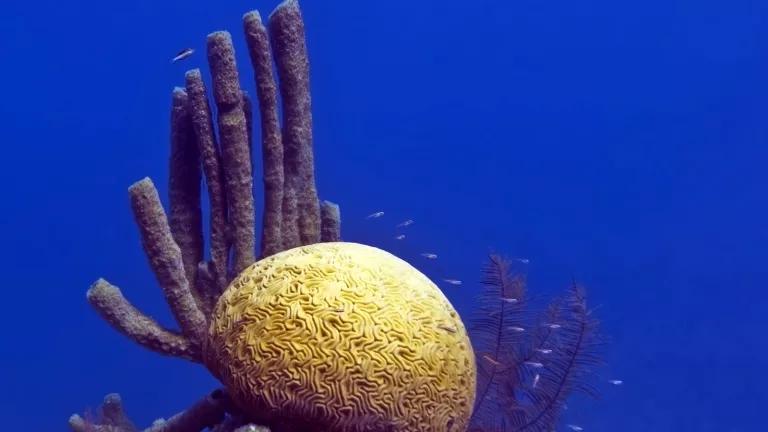A Look Back at 2018: Climate Action in Latin America

On the heels of a successful Conference of the Parties (COP24) of the United Nations Framework Convention on Climate Change (UNFCCC) in Katowice, Poland, and as 2018 comes to a close, we’d like to reflect on how Latin America has advanced in mitigating and responding to climate change over the past year. From policies to reduce plastic pollution to advancing electric mobility, Latin American countries have been stepping up as international climate leaders.
Plastic bag bans and other victories to protect Latin American oceans
Latin America is a biodiversity powerhouse, home to 60 percent of the planet’s species and 16 million square kilometers of oceans. This ecologically rich region is threatened by a global trash problem. Approximately 13 million tons of plastic are dumped into the world’s oceans every year, threatening human health, biodiversity and the economy. Fortunately, Latin American countries are making progress in tackling plastic pollution that threatens their marine ecosystems and citizens. Creative campaigns like “chao bolsas” (goodbye plastic bags) in Chile and #SinPopoteEstáBien (without a straw is fine) in Mexico, were emblematic of the major strides made in reducing plastic waste. Other countries, including Costa Rica, Panama, and Colombia passed initiatives in the forms of laws and taxes to reduce the use of plastic bags and straws.
During the World Ocean’s Summit in March, Ecuador and Mexico signed a letter of intent to collaborate on the preservation of marine biodiversity in Marine Protected Areas, particularly Galapagos Islands and the Revillagigedo National Park. Similarly, In January of this year, the government of Belize announced it would stop all exploration for oil in its territorial waters, becoming one of the first developing countries to turn away from oil in favor of protecting the ocean. The Belize Barrier Reef System has been a UNESCO world heritage site for over two decades and is home to around 1,400 species.
In a victory for the Vaquita Marina, the world’s smallest and most endangered porpoise, the U.S. Court of International Trade ruled that the Trump administration must ban all seafood imports from Mexico that are caught within vaquita marina territory with gillnets—the primary threat to the highly endangered mammal. Also, the Mexican government announced a new plan to save the species. The new plan has three priorities: surveillance, protection of the porpoise’s distribution range in the Gulf of California, and additional compensation for fishermen.
Forest restoration: protecting the lungs and carbon sinks of the region
In addition to its vast oceans, 50 percent of the world’s tropical forests are in Latin America. The Ministry of Environment in Argentina has proposed making deforestation a criminal offense, with penalties for illegal clearing ranging from six months to three years in prison. Since Hurricane María decimated Puerto Rico in September 2017, much attention has been focused on re-establishing the island’s electric grid. Now, a small group of ecologists from Puerto Rico and abroad are working to restore the island’s forests and coral reefs. Brazil hosted representatives from 40 countries at Foz de Iguazú for the third meeting of the Bonn Challenge, the main global initiative for forest restoration. Participants discussed efforts to meet the challenge’s goal of restoring 150 million hectares (over 370 million acres) of forest by 2020 and 350 million hectares (approximately 865 million acres) by 2030.

Cities progress towards a cleaner future
With 80 percent of Latin America’s population living in urban areas, cities have an increasingly important role to play in protecting surrounding ecosystems and biodiversity and employing mitigation strategies. Curitiba, Brazil is a pioneer and viewed as one of the world’s most sustainable cities as they use transit corridors that make extensive use of public transportation systems, an approach that is also being followed by Mexico. This year, the Ministry of Mobility of Medellin announced that 1,500 electric taxis will circulate in the Colombian city by 2020, starting with 500 this year. The city is committed to transforming urban public transportation, introducing its first electric bus at the end of 2017. During this year’s FIA Mobility Conference, Santiago de Chile won the Smart cities award with their project Plan Integral de Movilidad (Integrated Mobility Plan). Through this initiative, the city has built safer pathways and roads for pedestrians and cyclists, more effectively connecting non-motorized modes of transportation to traditional public transportation, reducing both pollution and congestion.

Looking ahead: more ambitious targets for 2019
Next year’s COP25 will be hosted in Chile with the help of Costa Rica, making 2019 an important year for Latin America to reaffirm its commitment to the Paris Agreement and lead a more ambitious vision for climate action. Numerous reports this year, including by the Intergovernmental Panel on Climate Change (IPCC), verify that the consequences of a changing climate might be felt sooner and more intensely than previously estimated. Despite only contributing to 12 percent of global greenhouse gas emissions, Latin America is particularly vulnerable to climate change. The economic costs could be between 1.5 percent and 5 percent of the region’s GDP by 2050, not to mention the deadly consequences of sea-level rise, water scarcity, and heat waves for millions in the region. While Latin America has made vast strides to address climate change, a lot is resting on the year 2019 to slow the rise of global temperatures and build resilience in the face of global warming.
